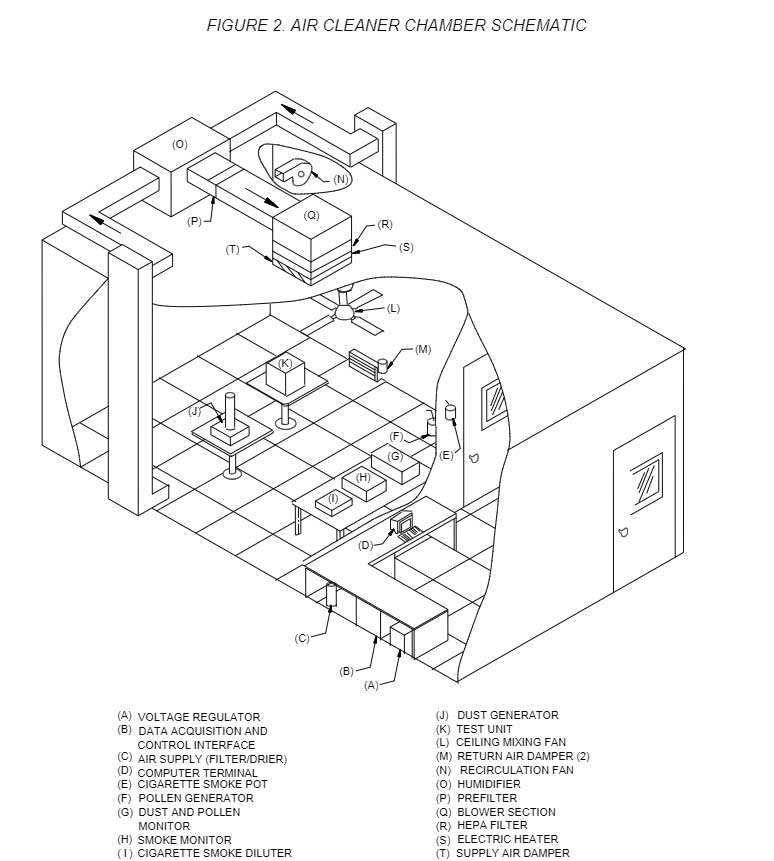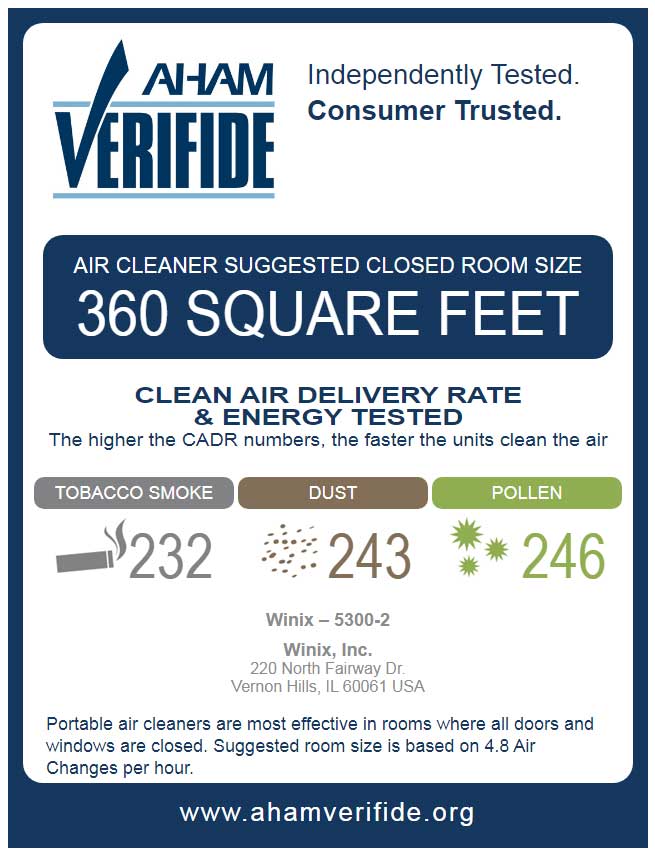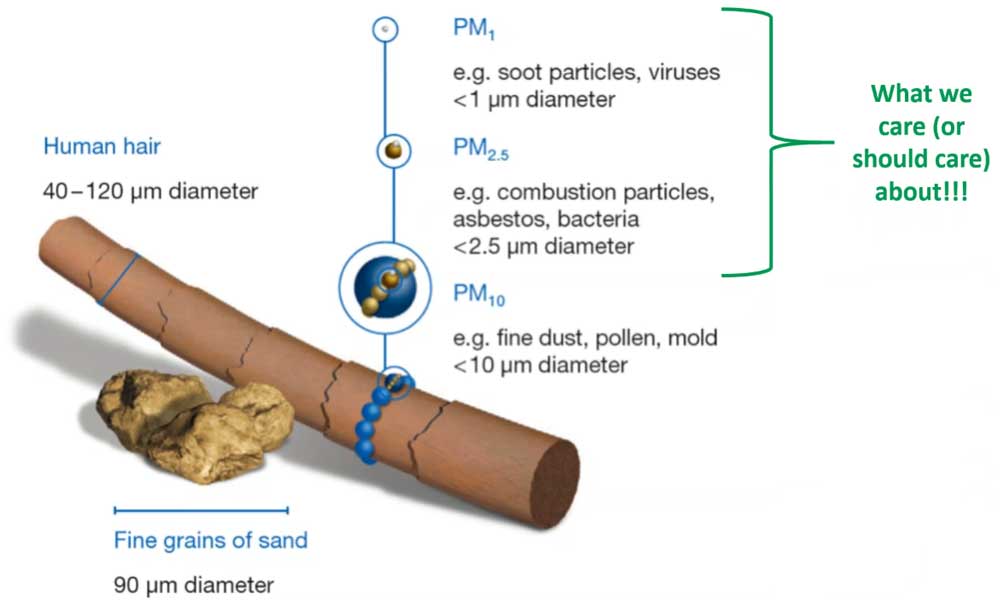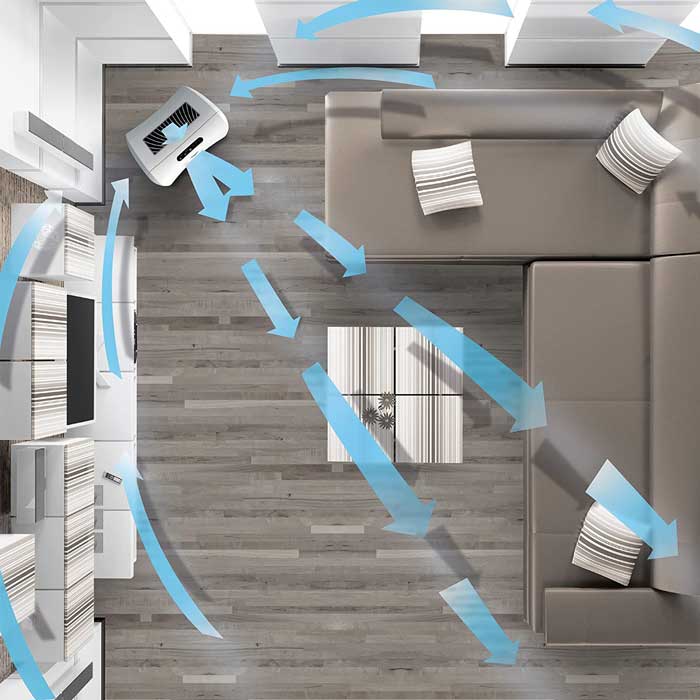CADR is a parameter used to determine the strength of an air purifier.
Read on to discover what this term mean and why it is important when you are purchasing air purifier.
- What is CADR for Air Purifier?
- How is CADR determined?
- What size of pollutants does CADR measure?
- How to Calculate CADR for Air Purifier
- What factors influence CADR Rating?
- What is the ideal CADR Rating?
What Is CADR?
CADR is an acronym for Clean Air Delivery Rate. It is basically a certified measurement that reflects an air purifier’s efficacy. CADR rating shows the volume of clean air a purifier can produce per minute.
How Is CADR Determined?
Clean Air Delivery Rate is determined by performing an ANSI/AHAM AC-1 test. The test involves placing an air purifier in a room measuring 1008 cubic feet (10.5 ft. x 12 ft. x 8 ft.). The room’s level of pollution is determined before the air purifier is activated and left to run. After operating for 25 minutes, the machine is turned off, and the contaminants are measured again. The results are consequently used to give the unit a performance rating.

AHAM (Association of Home Appliance Manufacturers) has three standard ratings provided on each machine’s seal. These ratings represent an air purifier’s efficiency in eliminating three types of particles, including smoke, dust, and pollen, from your indoor air.
Basically, AHAM determines each type of pollutant eliminated during the test and assigns the unit a score. For instance, you could find an air purifier with a CADR rating of 232/243/246.
This score represents:
- CADR for smoke – 232
- CADR for pollen – 243
- CADR for dust – 246

AHAM Certificate Example of Air Purifier Winix 5300
Note: You can confirm the CADR rating of your Air Purifier by visiting AHAM website.
There are limits to CADR measurability only CADR rates within the limits specified below can be considered statistically valid:
- Dust CADR = 10 cfm to 400 cfm
- Smoke CADR = 10 cfm to 450 cfm
- PollenCADR = 25 cfm to 450 cfm
What Size of Pollutants Does CADR Measure?
CADR measures smoke, dust, and pollen according to their particulate sizes:
- Smoke particles measure 0.09 to 1 micron, making them the smallest pollutants in the group
- Dust particles measure between 0.5 and 3 microns, qualifying as the medium-sized contaminants
- Pollen is the largest airborne impurity in this category, with size ranging between 5 and 11 microns

This means that any pollutant whose size falls between 0.09 microns and 11 microns will be eliminated by an AHAM verified air purifier. Unfortunately, AHAM has no gas or odor removal rating as their particles are less than 0.09 microns.
| PARTICLE SIZE RANGE MEASURED IN ANSI/AHAM AC–1 | |
|---|---|
| Particulate Matter | Particle Size Range Measured |
| Cigarette Smoke | 0.10 μm to 1.0 μm |
| Fine Test Dust | 0.5 μm to 3.0 μm |
Paper Mulberry Pollen | 5 μm to 11 μm |
What Is the Ideal CADR For My Space?
AHAM recommends a two-thirds rule to determine the maximum room size an air purifier can serve efficiently regarding its CADR. As such, you should take the CADR rating on your unit and divide it by 2/3 to determine your unit’s appropriate coverage area.
Considering the above example, if your prospective air purifier has a CADR of 180, it can efficiently serve spaces as large as 270 square feet.
Example Calculation:
Formula:
Room Size (ft2) = Smoke CADR x 1.55
or
Room Size (ft2) = Smoke CADR / (2/3)
Parameters:
AHAM recommended two-third rule (Factor) = 2/3 = 0.667
Air Purifier CADR = 180 cfm
Assumption:
8 feet ceiling
Solution:
Room Size (ft2) = 180 cfm/0.667 = 270 sq feet (approx)
Remember that you must calculate your unit’s efficiency based on the dominant pollutant in your space. For instance, consider calculating your air cleaner’s efficacy with the CADR for smoke if you’re a cigarette smoker.
Tip: The higher the CADR rating, the more efficient the unit.

What Factors Influence CADR Rating?
The CADR rating procedure takes a deeper look into the filter’s efficiency and the machine’s airflow. When the two factors are put together, you get a clear answer regarding the amount of air your unit can filter. In short, CADR is a reflection of an air purifier’s airflow multiplied by its filter’s efficiency.
This means that a unit with an inefficient filter will have a poor CADR rating regardless of perfect airflow. For instance, if a filter has 500 CFM and 100% efficiency, the CADR will be 500. However, if the same filter’s efficiency drops to 75%, the CADR automatically goes down to 375. However, you do not need to do this calculation as it is already considered CADR of (smoke/pollen/dust) is established for a unit.
Here’s how you calculate:
CADR = Filter Air Flow (Smoke/Pollen/Dust) x Filter Efficiency
CADR = 500 cfm x 0.75= 375 cfm
Note: CADR is also measured on the unit’s highest fan speed. If you run your unit on the lowest fan speed, the CADR will be lower because the airflow will be less than expected.
What Is The Ideal CADR Rating?
The recommended CADR rating is at least two-thirds of your room’s size. For instance, if your room’s dimensions are 15 feet by 10 feet, the total area is 150 square feet. Two-thirds of 150 is 100, meaning that your air purifier’s CADR rating shouldn’t be less than 100.
Example Calculation:
Room Size = 150 sq feet
Assume Height = 8 feet
Solution:
CADR = Room Size x 0.67
CADR = 150 x 0.67 = 100 cfm
The Bottom Line
CADR indicates an air purifier’s effectiveness in removing three differently sized household pollutants. The respective sizes for smoke, dust, and pollen are small, medium, and large. CADR is meant to help shoppers make better choices when looking to buy a suitable unit for their specific application.
